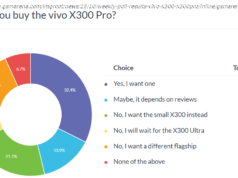It is too soon to determine whether central banks should issue their own cryptocurrencies, the Bank for International Settlements said on Sunday, as the risks could not yet be fully assessed and the technology underpinning them is still unproven.
LONDON (Reuters) – It is too soon to determine whether central banks should issue their own cryptocurrencies, the Bank for International Settlements said on Sunday, as the risks could not yet be fully assessed and the technology underpinning them is still unproven.
Central banks already use electronic money – only a very small proportion of their assets are now backed by gold – but this is exchanged in a centralized fashion, across accounts at the central bank.
What would be distinctive about a central bank-issued cryptocurrency – rather than just electronic money – would be that this could be exchanged “directly between the payer and the payee without the need for central intermediary”, by means of blockchain technology, BIS said in its latest Quarterly Review.
Blockchain technology enables peer-to-peer payments to be made using decentralized cryptocurrencies like bitcoin, by means of a shared ledger that verifies, records and settles transactions in a matter of minutes.
“While it seems unlikely that bitcoin or its sisters will displace sovereign currencies, they have demonstrated the ability of the underlying blockchain or distributed ledger technology (DLT),” BIS said.
Publication of the BIS report coincides with a crackdown by China on the cryptocurrency business as it tries to limit risks with consumers piling into a highly speculative market that has grown rapidly this year. RETAIL OR WHOLESALE?
The report explores two possibly forms of central bank-issued cryptocurrency: a consumer-facing currency for use in retail transactions, and a wholesale one that would be used by institutions as a “token” currency for digitally settling transactions.
BIS concluded that the peer-to-peer nature of the technology meant that a cryptocurrency for consumers could enable the anonymity that cash currently provides. But if that were not seen as important, it said, it was unclear what further benefits it could provide.
“Most of the alleged benefits of retail central bank cryptocurrencies can be achieved by giving the public access to accounts at the central bank, something that has been technically feasible for a long time but which central banks have mostly stayed away from,” it said.
BIS said that the question of whether or not a central bank should offer a digital alternative to cash was most pressing in a country like Sweden, where cash usage has declined rapidly over the past decade.
A retail cryptocurrency could also, if it were to completely replace cash, remove the zero-lower-bound constraint on monetary policy, BIS said, as it would no longer be possible for depositors to avoid negative interest rates by hoarding cash.
On the institutional side, a central bank-issued cryptocurrency’s usefulness depended on whether it could reduce settlement times and improve efficiency, BIS said. But that had yet to be proven and would depend on the successful resolution of a number of technical issues.
BIS concluded that central banks would probably have to decide on an individual basis whether issuing retail or wholesale central bank cryptocurrencies made sense for them.
“In making this decision, central banks will have to consider not only consumer preferences for privacy and possible efficiency gains – in terms of payments, clearing and settlement – but also the risks it may entail for the financial system and the wider economy, as well as any implications for monetary policy,” BIS said.
“Some of the risks are currently hard to assess,” it said, adding that very little was known about the resilience such currencies would be able to show to cyber-attacks, for example.






